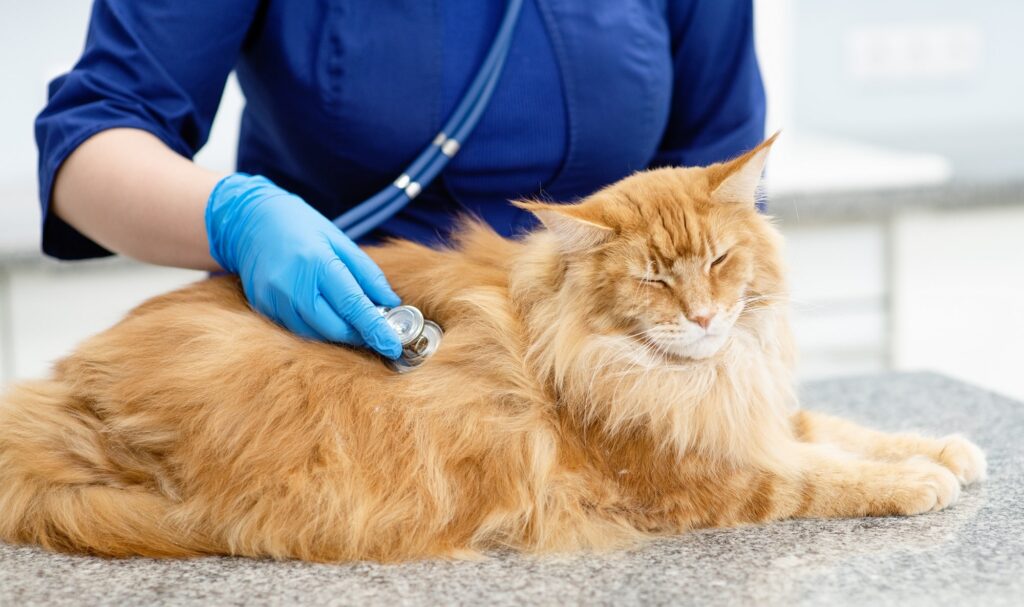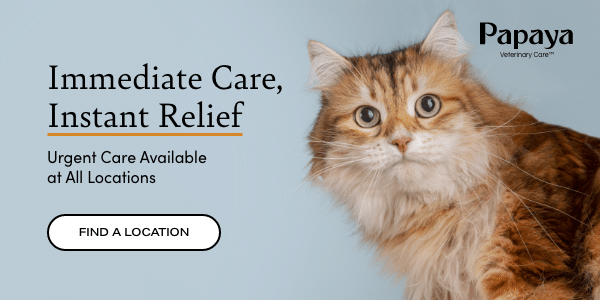The veterinary industry is one that faces many challenges, with the obvious being barriers to communication with our patients. Our patients cannot tell us exactly what is wrong with them like humans can. Animals rely heavily on both veterinary professionals and their owners to make sure the proper steps and protocols are taken during their visit. One of the most crucial protocols for a patient visit is the collection of vital signs and weight measurements.
Veterinary professionals rely on the owner to get a patient history. Once reviewed, we then turn to a physical exam to gather additional pieces of the puzzle. In some practices, such as where fear free methods are used, professionals may hesitate to gather all the important vitals needed to prioritize pet comfort. Additionally, with many of us experiencing a high case load, especially in an ER or hospitalized setting, it is not uncommon for us to rush through initial assessments due to ‘being too busy’. When a patient is hospitalized, to prioritize urgency, repeating collection of vital signs and weight is sometimes an afterthought. Triaging to make sure the patient has received all medications, fluids are at an accurate rate, and the patient is fed and walked can take priority. Let’s review each vital intake method that may be altered when prioritizing other interventions.
Rectal temperature collection is usually the first approach bypassed. Even though it is the most accurate method for recording temperature, it is also the most invasive. Practices that promote fear free approaches may hesitate to put the pet in a state of distress. Weight is the other approach often skipped, either because there may not be a scale on hand in the exam room, or because we bypass the large scale in the lobby and plan to get it later.
Initial vitals and weight measurements should be equally important as ensuring a patient is comfortable. Repeating vitals and weight should be prioritized equally to hospitalized interventions such as ensuring the patient is getting their medications or injections. Both the initial and repeated vitals and weight measurements provide a foundation for a veterinarian to provide care and a baseline for future visits.
Accurate vital signs and weight on intake provide the veterinarian with key information. The weight on the patient provides a baseline for calculations for medications, injections, and/ or fluid rate when hospitalized. Weight will also allow the veterinarian to determine a weight score and plan of action if the patient needs to lose or gain weight. Although environmental factors can sometimes skew vitals, they still provide valuable information. Vital signs and weight tell a story. If we are missing these and/or not rechecking them, we can miss the mark on providing quality veterinary care.
What are the risks associated with falling short of best practice?
You now understand why we take vitals and weight so seriously, so let’s move on to risks associated with falling short of best practice. Risks of missing vital sign protocols include disrupting workflow, unnecessary client and patient stress, adverse patient reactions, and missed medical interventions.
Disrupted workflow causing unnecessary stress:
Missing the initial weight and vitals can disrupt the workflow within a hospital. Hospital staff may be forced to backtrack their patient throughput to collect vitals. Even worse, old weight/vitals may be used to make decisions for that day’s visit. Having to disrupt patient throughput can lead to your patient becoming unnecessarily stressed as well as the client becoming agitated that things are taking longer than they should.
Adverse patient reactions:
Without having the most up to date vitals information, we run the risk of administering medication according to obsolete data (e.g. values are not within normal limits). This can result in the patient having an adverse reaction or other harm. It is important to never assume the vitals and weight stay the same. Even if the patient was just seen yesterday or an hour ago, things can change very quickly and that can be an unfortunate mistake if we assume things haven’t changed. We also may have incorrect vitals information from gathering the data too quickly. For example, we may get a femoral pulse and place a hand on the chest to get a respiratory rate without taking additional steps to ensure accuracy. To make things more complex, we can also run into a problem if they are not collected fast enough. For example, if we have a patient that we assumed had a heat stroke and started to actively cool it, not taking an initial temperature would remove our ability to determine the risks for potential brain injuries due to the internal elevated temperature. Or as silly as it may sound, maybe the patient’s temperature was never elevated to begin with and now we are actively cooling a patient based on assumptions.
Missed medical interventions:
When it comes to hospitalized patients that had weight and vitals collected but lacked a follow up protocol for repeating them, they too are at risk for potential harm. When you have a patient on fluids and are not monitoring their weight and vital signs, you may miss important indicators that would direct the veterinarian to adjust their treatment plan. Fluid therapy can provide a million and one benefits for a patient that needs them, but there is such a thing as too much of a good thing. Skipping monitoring a patient’s temperature during hospitalization can be detrimental if not rechecked as well. If we have a patient on fluids that are not warmed, and temperatures are not repeated, we open the door for our patient to become hypothermic without us knowing. Another example of when not monitoring temperature can be detrimental is when you are actively warming a patient. If that temperature is not repeated every 1-2hrs you can overheat your patient especially when actively warming a neonate.
What are the best practices for collecting vital signs and measurement?
After covering what could be missed and the associated risks, let’s shift gears and talk about best practice. Implementing best practice in a hospital starts with getting the staff to truly understand the importance of collecting a patient’s vitals and weight. Once they have a better idea of how those key pieces affect the big picture when treating the patient, they will be more likely to ensure appropriate collection and documentation.
Writing out Standard Operating Procedures that incorporate collection of these throughout the intake process helps to solidify those in a routine. Setting up a process where you have more than one person taking a set of vitals can be helpful as well. For example, have the technician get vitals/weight first, then have the veterinarian follow up/double check them. Your colleague may see or hear something you missed. Having an extra set of eyes and ears on a patient is never a bad thing.
Listening to your patient with your stethoscope and physically touching your patient to perform those TPR’s every 6hrs will help to reduce the margin for errors. You can’t really tell how a patient is doing by simply staring at them in their kennel. If a patient is too fearful or a value was unable to be collected, the veterinarian and team should be notified so it can be collected later. In situations where a patient is obviously worked up and the veterinarian agrees that the values are inflated due to stress, a plan of action should be put into place to collect them again when the patient seems more relaxed.
When a patient is hospitalized, depending on the case, repeat vitals and weight should be planned out for the entire visit. Include plans for the veterinarian to perform touch point evaluations. A perfect example of what this may look like: a patient is on fluids and is hypothermic. The staff should perform a full TPR every 6hrs, temperatures every two, and weight checks every 6hrs. There should also be a notation for the veterinarian to evaluate the fluid rate every 6-12hrs, depending on the severity of the case.
Make it last:
In order to ensure best practices, SOPs and protocols may not be enough. You also will need to reinforce your approaches, which is when retraining is in order. Frequently (e.g quarterly), evaluate your processes for best practice. When gaps or errors occur, figure out where the ball is getting dropped. Rather than assign blame, re-train the staff to make sure everyone is up to speed. Although we are all busy, ensuring we follow our protocols can reduce errors and actually save time in the long run. At the end of the day everyone’s goal should be to provide quality veterinary care to their patients and a great experience for the client. Don’t jeopardize quality care by taking shortcuts.
– Written by Melinda Ferrara, Director of New Hospital Openings


